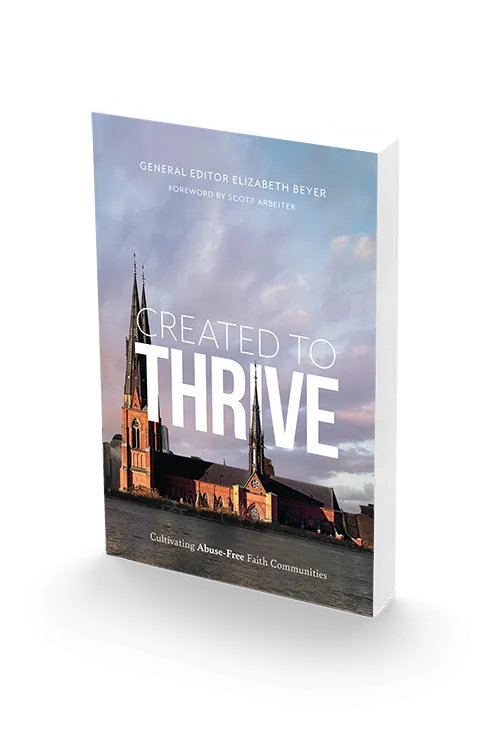Whereas most books on women in ministry primarily focus on contested Bible verses, Nijay K. Gupta’s Tell Her Story: How Women Led, Taught, and Ministered in the Early Church takes a different approach. Gupta studies women throughout the Old and New Testament first, as if to say, these are the stories we need to shape our view of women—the ones that depict what women did, how they served, and what the Spirit enabled them to do. The book is structured into three sections: “Part One: Before the Women of the Early Churches,” “Part Two: The Women Leaders of the Early Churches,” and “What about. . .?” As each section covers a wide variety of topics, I will do my best to highlight the most prominent ones.
Part One: Before the Women of the Early Churches
Throughout the book, when asked the question, “What can women do?” Gupta responds by asking, “What did they do?” He sets out to answer this question right from the beginning by highlighting one of the most interesting leaders from the Old Testament—Deborah. When Israel lacked direct and sustained leadership,[1] God used Deborah, a strong and wise prophet-judge, to deliver them.[2] Readers will be pleased that no stone is left unturned here. Gupta spends a lot of time in the book of Judges. He helps readers understand what a judge is, compares Deborah to other judges of the Bible, and much more. As for common arguments that downplay Deborah’s impact, such as, “There were no suitable men available,” Gupta expertly pushes back, saying, “If we look at judges as a whole, especially Gideon and Samson, it is clear that they were not chosen for their virtue or strong faith. In fact, Deborah appears to be the most faithful, the most prophetically tuned into God, and the wisest of them all.”[3] So, when people say, “Women can’t,” Gupta responds, “Deborah did!”[4]
Gupta also tackles Genesis 1–3. Long-time egalitarians will find themselves nodding along with most of the exegesis in this chapter, but those new to the subject will find a well-argued, non-hierarchical view of Genesis 1–2. According to Gupta, Adam and Eve are both made in the image of God, they were both given the task of ruling over the earth,[5] and Eve was not Adam’s subordinate helper but his counterpart in accomplishing their God-given mission.[6] Gupta describes the fall as the “unraveling” where Adam and Eve’s relationship with each other, God, and the garden falls apart.[7] As such, patriarchy—men ruling over women—was not a part of the initial plan but a symptom of this undoing. It should be noted, however, that the implications of the word teshuqah (longing, desire) in Genesis 3:16 are highly debated by Bible scholars. Gupta briefly considers the word and seems to lean toward understanding the woman’s longing as somehow putting her at odds with the man, resulting in a struggle of wills rather than harmony (see the footnotes for female scholars on all sides of this discussion).[8] That said, it remains unclear where he lands on the issue, which may cause some readers to pause. Overall though, readers will find the chapter on Genesis to be effective and concise. Gupta says just enough here.
Skipping forward in time, chapter three accurately sets the scene of the ancient Greco-Roman world. What did it look like for women to live in a patriarchal society? Were women confined to the private sphere? Gupta answers these questions carefully. He acknowledges that the ancient Greco-Roman world was not a safe or ideal place for women. Women were looked down upon as gullible, easily tempted, incapable of reason, and they rarely held positions of power.[9] But at the same time, Gupta points out that women (especially wealthy women) could break away from these social constructs.[10] He uses examples from stories, inscriptions, and censuses to help readers understand what women actually did. He speaks out against common misconceptions, such as the home being merely a private space,[11] and shares a vast wealth of knowledge on social status, households, and patronage that all readers will appreciate.
At the end of Part One, Gupta briefly covers women throughout Jesus’s ministry, including Mary (the mother of Jesus), Mary Magdalene, Elizabeth, Anna, the Samaritan woman, and others. Through these Bible women, he shows that women’s voices can teach us about God,[12] that God gives women divine insight,[13] and how women can be disciples.[14] Readers looking for answers to questions like, “Why were the twelve disciples all men?” and “How did Jesus treat women?” will also find thorough responses here. But I found this section to be a bit drudging to read through because I—perhaps like Gupta—was eager to get to Part Two.
Part Two: Women in the Early Church
Without a doubt, Part Two is the pinnacle of Tell Her Story. Gupta’s expertise shines here as he helps readers take off their culture-tinted glasses. He impactfully shows that leadership in the early church was different from the Greco-Roman culture, stating it “deviated from cultural tendencies to establish a power and status hierarchy.”[15] This part also delves into Paul’s co-workers and their job descriptions. To Gupta’s best knowledge, diakonoi were “ministry providers” and leaders who served people,[16] and the title episkopos was a more formal leadership position meaning “overseer.”[17] He notes that although no one, woman nor man, is named as an overseer, it would be natural for householders to be overseers.[18] Therefore, the rare woman householder could have been an overseer as well. For elders, Gupta suggests they were a general group of older figures in the community sought for their wisdom.[19] Readers looking for answers to how the early church was structured will appreciate this section and, whether they agree or disagree, Gupta makes a compelling case.
As much as I enjoyed the previous chapters, the portions dedicated to specific women were the most captivating. This book is called Tell Her Story, after all! Among the women primarily covered with their own chapters are Phoebe, Prisca, and Junia. But Gupta also discusses a great host of other women throughout Paul’s letters (many as ministry leaders and overseers), including Tryphaena, Tryphosa, Julia, Nereus’s sister, Rufus’s mother, Lydia, Euodia, Syntyche, Apphia, and Nympha. There are so many that I’m sure I’ve missed a few! By highlighting all these women, Gupta shows that women were serving and leading everywhere that men were.[20] As for Phoebe, Prisca, and Junia, Gupta is careful to let readers know what is speculative and what can be backed with evidence. For example, he is uncertain whether Phoebe read Paul’s letter out loud (although it is possible). She was likely Paul’s trusted ministry agent who served the church on his behalf as a ministry provider.[21] For Prisca, he argues that she was more active in ministry than Aquila[22] and the primary teacher of Apollos.[23] And lastly, for Junia, Gupta reveals that she was indeed an apostle and a woman.[24] These chapters are all rich with biblical and historical insights on these female leaders that readers will eagerly soak in.[25]
What About. . .?
Even though the book does not focus on “limiting” Bible verses, readers searching for answers to contested verses will not be completely disappointed. Gupta also sheds light on 1 Timothy 2 and the household codes in his “What About. . . ?” section.[26] Here, he shows that a fuller view of women in Scripture is not only desired but critical for us to interpret and apply these passages well.
Overall, Tell Her Story brings the narratives of prominent women throughout God’s Word front and center, causing our misconceptions to fade into the background—a mere blip in the overarching story.[27] From this vantage point, readers will soon realize that women leading alongside men was not a rare happenstance but common in God’s newly created order. So, can women lead the church? Gupta concludes, women in the early church certainly did.[28]
[1] Nijay Gupta, Tell Her Story: How Women Led, Taught, and Ministered in the Early Church (Downers Grove: InterVarsity, 2023), 13.
[2] Gupta, 14.
[3] Gupta, 15–16
[4] Gupta, 136.
[5] Gupta, 23.
[6] Gupta, 25.
[7] Gupta, 27.
[8] See pages 28–29.Gupta cites Lucy Peppiatt’s mutualist view as an option. She depicts the woman as turning toward her husband to meet her needs, and his fallen response is to dominate her (Rediscovering Scripture’s Vision for Women, 54).
Sandra L. Richter combines these ideas. She writes, “But with the Fall, although Adam and Eve still desperately need and desire one another, they are no longer able to live their lives together with the same mutuality. Rather, they are now locked into a competitive relationship, each vying for control of the other, contending for the resources that now appear so transient. . . Eve’s longing for her husband will too often result in her willing participation in her own oppression and abuse” (The Epic of Eden, 109–110).
Marg Mowczkow pushes back on the connection between Genesis 4:7 and Genesis 3:16: https://margmowczko.com/genesis-316-teshuqah-mashal/
[9] Gupta, 31.
[10] Gupta, 33.
[11] Gupta, 39.
[12] Gupta, 49.
[13] Gupta, 54.
[14] Gupta, 59.
[15] Gupta, 71. He builds upon Andrew D. Clarke’s work here.
[16] Gupta, 76.
[17] Gupta, 76.
[18] Gupta, 77.
[19] Gupta, 78.
[20] Gupta, 175.
[21] Gupta, 102.
[22] Gupta, 116.
[23] Gupta, 120–21.
[24] Gupta, 128–131.
[25] These one-sentence summaries of the chapters on Phoebe, Prisca, and Junia barely scratch the surface. I highly recommend reading these chapters as they are a great resource. See also, CBE’s Women in Scripture and Mission series.
[26] As the “What About. . .?” section is not extensive, Gupta gives several recommended reading materials on pages 176–177. You can find many of them in CBE’s bookstore here: https://cbeinternational.christianbook.com/discovering-equality-theological-cultural-practical-perspectives/9780830854790/pd/854791?event=ESRCG.
[27] Gupta is not conducting revisionist history here. He does not erase everything that has been said; rather, he amplifies the stories of women that have been seriously overlooked and reads contested Bible passages within their much-needed contexts. See pages 6–7.
[28] Gupta, 175.





